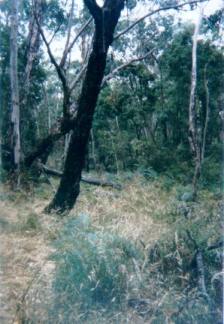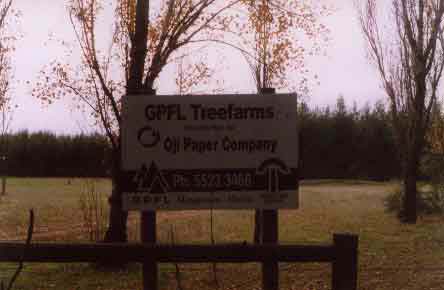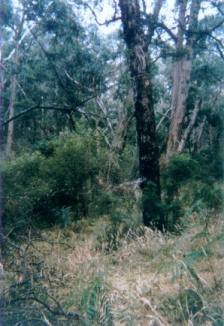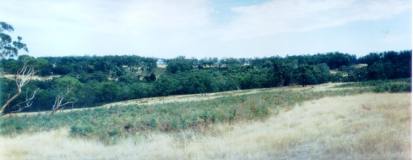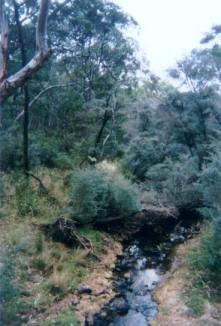Plantation located in Portland Groundwater Management Area A portion of this plantation area, along the Crawford River is probably a known recharge area for the Dilwyn confined aquifer. The Dilwyn Aquifer provides drinking water to Portland, Dartmoor and Heywood. The Nationally Threatened Temperate Grassland & Grassy Eucalypt Woodland Ecological Community may occur in this plantation or in close proximity. Plantation located on Victorian Volcanic Plain Bioregion. More Information: http://www.environment.gov.au/epbc/publications/pubs/grasslands-victoria.pdf
Google Earth image early 2005: Smokey Valley plantation lies alongside Crawford River Regional Park. It obviously wasn't planted out with bluegum when this photo was taken. One hopes that bluegum insecticides such as alpha-cypermethrin and dimethoate won't be used in such close proximity to the Crawford River. Plantation
maps of region here THREATENED FISH NOTES - GLENAULIN CREEK/CRAWFORD RIVER: Only known habitat for FFG listed Ewens Pygmy Perch in Victoria. Yarra Pygmy Perch also found here.
May 04: This entire area is
now leased by GPFL Treefarms and has been planted out with Bluegum. THREATENED FISH NOTES - GLENELG RIVER: Yarra Pygmy Perch and Ewens Pygmy Perch found in the Glenelg system. Both species listed under the Flora and Fauna Guarantee Act in Victoria and threatened.
Ewens Pygmy Perch Responsible Authority: Glenelg Shire Council
"Groundwater: "In south-western Victoria the Otway Basin stretches from the South Australian border almost to the west of Geelong. It contains older sediments of Upper Cretaceous and Lower Tertiary age, up to 2000 m in thickness. These include four sand aquifers and two limestone aquifers. The sand aquifers of the Wangerrip Group are confined over most of the Basin and their recharge zones are located on the margins of the Otway Range in the east and the Merino Tablelands in the West. The groundwater moves towards the coast, increasing in salinity along its floorpath . . ." p268 State of the Environment Report 1988 Victoria's Inland Waters. Office of the Commissioner for the Environment. "Shallow aquifers in the Glenelg River Basin occur in four main geologic units . . . The third unit is a Newer Volcanic aquifer which lies along much of the Basin's southern boundary, particularly in the east. This fractured rock aquifer is composed of basalt, scoria and tuff. The fourth unit is composed of dune sand and beach deposits extending from the south-west corner of the Basin up to the western boundary and along the northern boundary. It is known as the Bridgewater formation. A deep aquifer system exists in the south-west of the Basin and extends to the top of the western boundary and half-way across the southern boundary. This sand aquifer, which is significant as a water source, occurs within the Wangerrip Group. Generally, groundwater quality in the Basin decreases towards the north where it is saline. A large reserve of fresh water is held in the north-east corner of the catchment and in the south-west the water is of marginal quality . . ." p295 Water Victoria A Resource Handbook - Department of Water Resources Victoria 1989.
|
